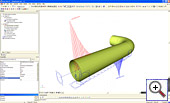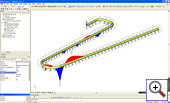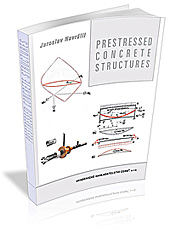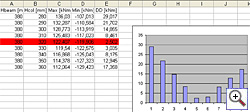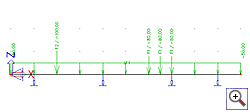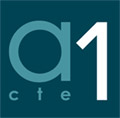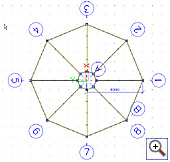|
Home | Company | Solutions | References & Markets | News & Events | Support | Contact |
||||||||||||||||||||||||||||||||||||||||||||||||||||||||||||||||||||||||||||||||||||||||||||||||||||||||||||
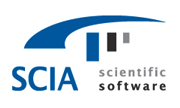 |
 |
|||||||||||||||||||||||||||||||||||||||||||||||||||||||||||||||||||||||||||||||||||||||||||||||||||||||||||
| NL FR EN DE CZ | November 2006 |
|||||||||||||||||||||||||||||||||||||||||||||||||||||||||||||||||||||||||||||||||||||||||||||||||||||||||||
|
Dear readers, |
|||||||||||||||||||||||||||||||||||||||||||||||||||||||||||||||||||||||||||||||||||||||||||||||||||||||||||
| SCIA Releases Publications on Cutting Edge Technological Innovations | ||||||||||||||||||||||||||||||||||||||||||||||||||||||||||||||||||||||||||||||||||||||||||||||||||||||||||||
 Know-how transfer is a key factor for the success of a tech company such as SCIA. Know-how transfer is a key factor for the success of a tech company such as SCIA. In this eNews two publications are announced. The first is a book written by dr. Jaroslav Navratil, titled "Prestressed Concrete Structures". J. Navratil is a senior functional engineer and manager at our Brno Office in the Czech Republic. He is also teaching at the University of Brno. His book describes the essentials of Prestressed Concrete, as well from the viewpoint of the structural designer as from the practical execution. SCIA, together with other partners, has sponsored the edition of this important book, available in English and Czech language. The second publication is a white paper on structural optimization: "Overall Optimal Design of Structures". SCIA has succeeded in offering an automated methodology, embedded in our standard software, to optimize structures. Parameters, constraints and goal function (e.g. minimum weight, maximum bearing load, …) are defined by the users themselves. We kindly invite you to read these publications! |
||||||||||||||||||||||||||||||||||||||||||||||||||||||||||||||||||||||||||||||||||||||||||||||||||||||||||||
| Overall Optimal Design of Structures in SCIA•ESA PT 2007 | ||||||||||||||||||||||||||||||||||||||||||||||||||||||||||||||||||||||||||||||||||||||||||||||||||||||||||||
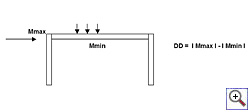 Most CAE software products announce: “Our software helps you to make an optimal design of your structures”.
Is this achieved in reality? Most CAE software products announce: “Our software helps you to make an optimal design of your structures”.
Is this achieved in reality?In common sense one talks about optimisation of structures, but in fact one optimises only a few chosen structural parts. A design engineer searches for the minimal size of the cross-section that satisfies the design code, he/she tries to find the minimal number of bolts needed in a specific steel connection, he/she is searching for minimal required area of reinforcement steel in a concrete beam. All structural parts are designed optimally, yet it does not mean that the whole structure is optimal for instance from the point of view of cost of material, time of construction, price of labour, etc. An optimal design of a structure is found when many variants are tried and compared. Everybody will agree, but how many times it is a real case in the construction industry? A typical example concerns a reinforced concrete beam. At the start the dimensions of the cross-section are preselected, then the internal forces are calculated and the reinforcement is designed, optimally of course. Yet who plays a little bit more with the height and width of the beam to find an optimal price of the whole beam, which is composed out of the price of concrete and the price of steel? Almost everybody is able to do it with existing software tools, it is only the question of testing of number of variants, comparing of them and finding the most suitable one. In fact, it could be realistic for small projects, but not for real big projects. Steel and concrete members can be designed optimally. Optimisation of steel-cross sections is common practice since many years; the optimal design of reinforcement was made available more recently. The simplest optimisation solver is the one that generates all possible sets of input parameters and calculates a goal function from all of them. Then the minimal (or maximum) goal value is found with the optimal set of input parameters. This operational mode is simple and reliable. If one calculates all possible variants, then one definitely finds the optimum. The only problem is that for systems with many parameters, the number of variants dramatically increases. This kind of “batch optimiser” is now available in SCIA•ESA PT. The user only defines limits for his parameters and the step of variation for the parameters. All variants are calculated and diagrams of the results are generated within the spreadsheet Excel. You can read more in our white paper: "Overall optimal design of structures in SCIA•ESA PT 2007" |
||||||||||||||||||||||||||||||||||||||||||||||||||||||||||||||||||||||||||||||||||||||||||||||||||||||||||||
| The German ‘Public Works Building Sector’ joins again with the European growth | ||||||||||||||||||||||||||||||||||||||||||||||||||||||||||||||||||||||||||||||||||||||||||||||||||||||||||||
After ten years of difficulties, the German ‘Public Works Building Sector’ has got out of a jam, as declared by the president of the German federation of the sector. The sector wishes to become again 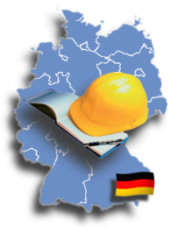 the growth engine of the first economy of the euro zone. the growth engine of the first economy of the euro zone.“For the first time in a decade we see a revival, according to Hans-Peter Keitel, owner of Hochtief, the first ‘Public Works Building’ group of the country. We are on our way to turn from a sick child into the engine of the German economy”, he added, also recalling that the building sector had always been one of the major forces of the country. According to the figures from January to July, published by the federation, the amount of orders increased by 8,4%, while the sales turnover of the actors of the sector increased by 2,1%. For the whole of the year, the branch counts on a growth of the sales turnover of 2% after several years of retreat or stagnation, indicated Hans-Peter Keitel. “Lately the German economy has grown spectacularly, this has not been equalled the last five years; the Public Works Building Sector has strongly contributed to this growth”, the Minister of Economy, Michael Glos, declared, he also thinks that ten years of ‘dive’ in this branch will arrive to an end. The requests coming from the new member states of the European Union also added to this boom in the building sector, according to Michael Glos, who predicts that “that will surely be similar with Romania and Bulgaria”, of which the adhesion to the EU is planned for 2007. |
||||||||||||||||||||||||||||||||||||||||||||||||||||||||||||||||||||||||||||||||||||||||||||||||||||||||||||
| F1 circuit of SPA - FRANCORCHAMPS | ||||||||||||||||||||||||||||||||||||||||||||||||||||||||||||||||||||||||||||||||||||||||||||||||||||||||||||
Some figures:
| ||||||||||||||||||||||||||||||||||||||||||||||||||||||||||||||||||||||||||||||||||||||||||||||||||||||||||||
| Tips & Tricks: Overview drawings in circular line grids in SCIA•ESA PT | ||||||||||||||||||||||||||||||||||||||||||||||||||||||||||||||||||||||||||||||||||||||||||||||||||||||||||||
 An easy tool in SCIA•ESA PT is the possibility to automatically generate overview drawings according to previously defined planes of the line grid. An easy tool in SCIA•ESA PT is the possibility to automatically generate overview drawings according to previously defined planes of the line grid.However, while working with a circular line grid, it seems that the labels of the planes for which the overview drawings should be generated are not displayed, so it is impossible to see which plane number is needed. This is due to the fact that, by default, the labels are displayed at the beginning of the grid lines. With circular line grids they all coincide at the centre of the grid. This would make the drawing very complex and thus the labels are omitted. The solution is setting the labels at the end of the grid lines, instead of at the beginning. Opening the tab “Drawing setup” in the "line grid" manager can do this. Here the option ‘labels’ has to be set on “End” instead of “Beginning”. Now all labels are displayed and they can be clearly seen by the user. |
||||||||||||||||||||||||||||||||||||||||||||||||||||||||||||||||||||||||||||||||||||||||||||||||||||||||||||
| About this SCIA eNews | ||||||||||||||||||||||||||||||||||||||||||||||||||||||||||||||||||||||||||||||||||||||||||||||||||||||||||||
|
||||||||||||||||||||||||||||||||||||||||||||||||||||||||||||||||||||||||||||||||||||||||||||||||||||||||||||
|
|
||||||||||||||||||||||||||||||||||||||||||||||||||||||||||||||||||||||||||||||||||||||||||||||||||||||||||||
|
SCIA Group nv - Industrieweg 1007 - B-3540 Herk-de-Stad Tel: +32 (13) 55.17.75 - Fax:+32 (13) 55.41.75 |
Copyright © 2006 - SCIA International is member of the Nemetschek Group |
|||||||||||||||||||||||||||||||||||||||||||||||||||||||||||||||||||||||||||||||||||||||||||||||||||||||||||

